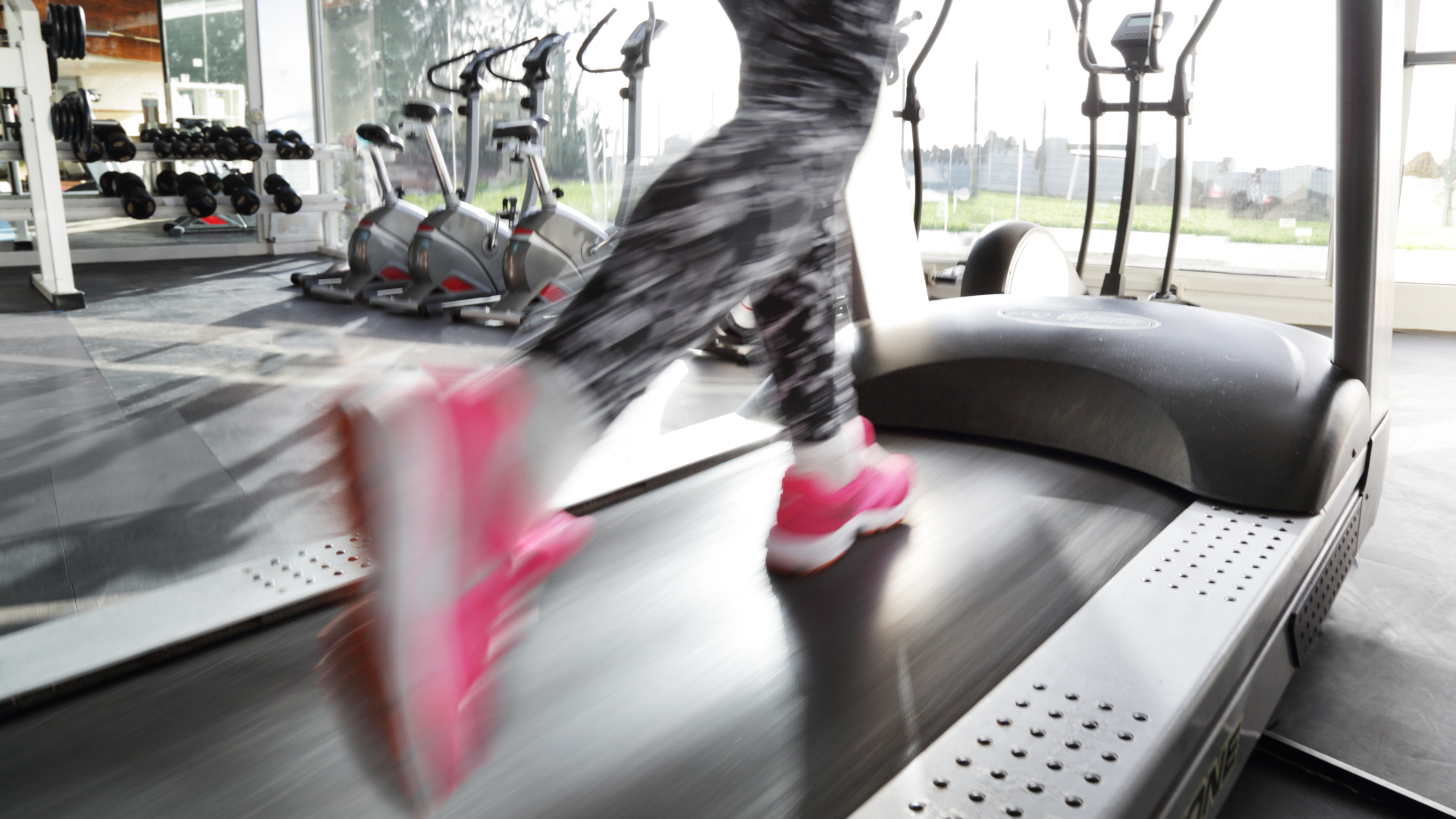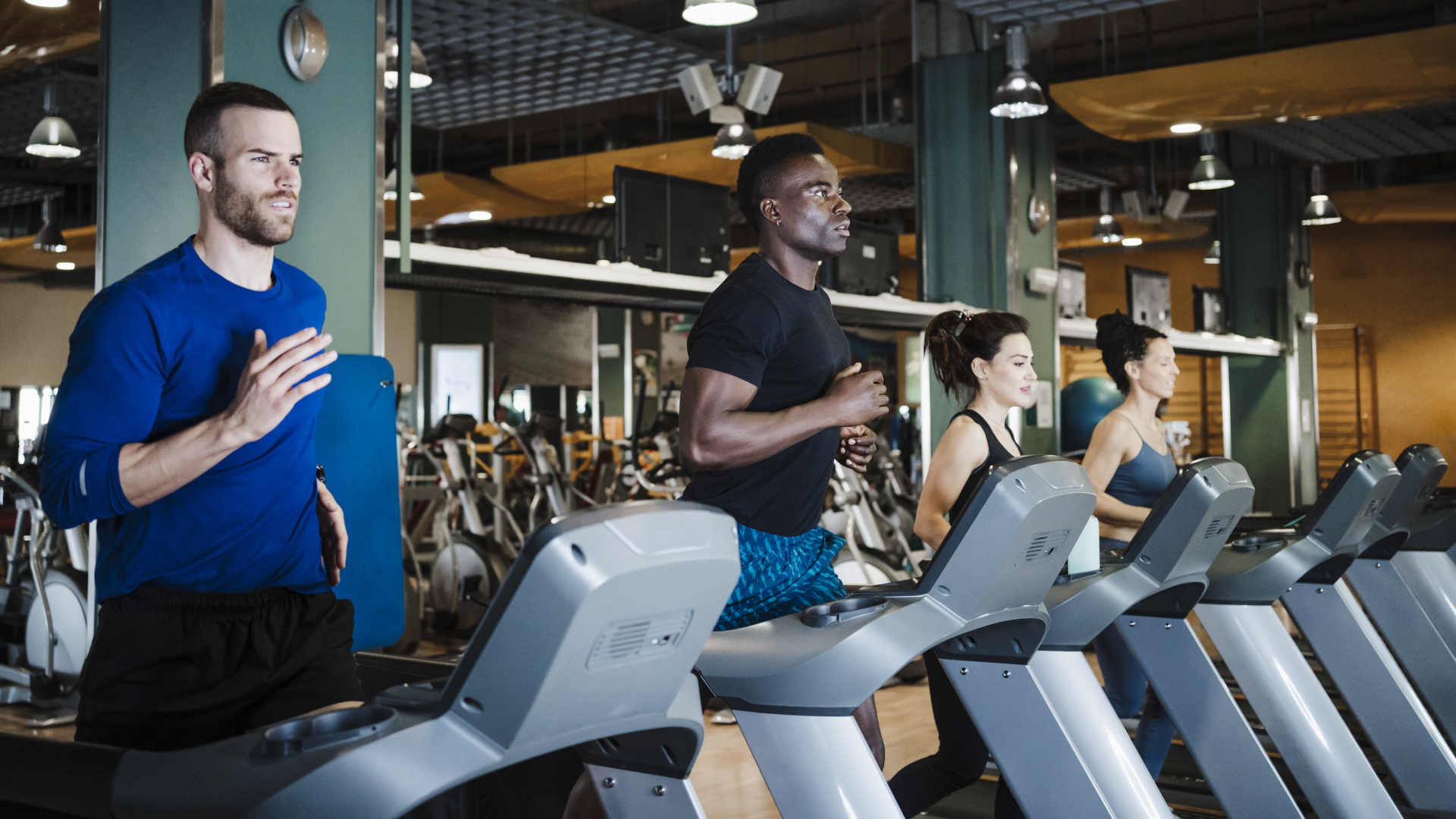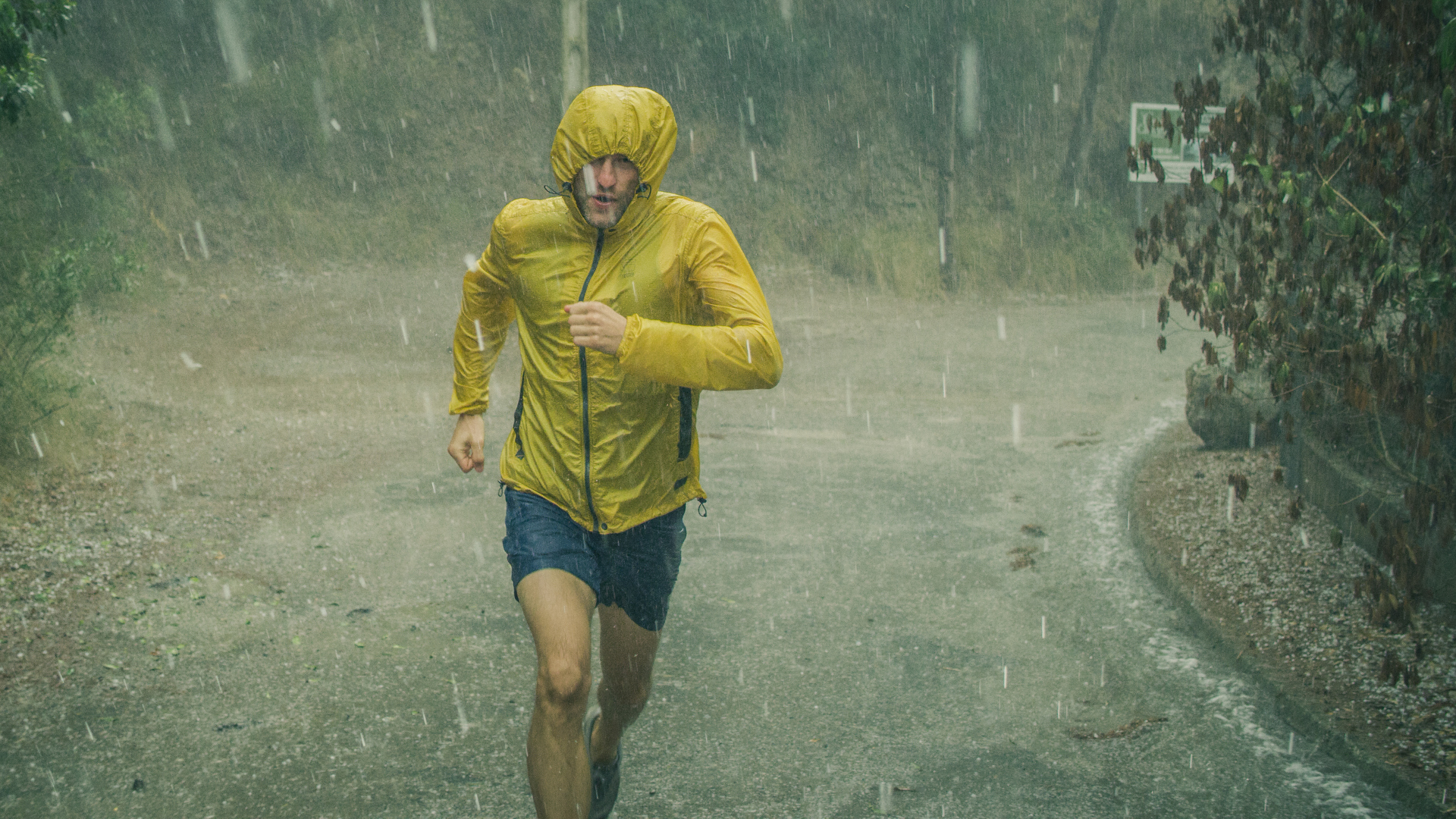Treadmill vs outdoor running: can they both make the podium?
We put treadmill vs outdoor running through their paces to see if one takes the gold

When you lace up your best trail running shoes, do you head outside for some fresh air, or hit the Start button on the treadmill? Treadmill vs outdoor running doesn’t have to be a debate, but for reasons unknown, it often is.
Running purists wouldn’t be caught dead on a hamster wheel, but Statista reports that almost 53 millions Americans were treadmill users in 2017, making up the majority of its 60 million runners, so there’s obviously a lot of people who swear by the benefits of it. Those that run on treadmills argue for its softer surface, convenience, lack of weather and control over pace and incline, while outdoor runners say that running on a static surface requires more effort, uses more muscle strength and is better for training as well as mental health. So is one really better than the other? We put the two through their paces and we were surprised that the answer is not always as clear cut as you might think.

Treadmill vs outdoor running: exertion and calories
One major difference between running on a treadmill and outdoor running is how you run, and whether that affects the outcomes. A 2020 review of studies in Sports Medicine found some biomechanical differences between the two, such as a shorter stride and less contact time in treadmill running versus outdoor running.
When you’re on a treadmill, the motion of the belt means you have to put less effort into propelling yourself forward, while the longer stride and contact time associated with outdoor running combined with conditions like challenging, uneven terrain and running into the wind mean it usually requires more effort. For sure, the perceived rate of exertion is higher with outdoor running, while many outlets cite studies that say outdoor running burns 5% more calories than treadmill running without linking to the actual studies.
Regardless, calories burned comes down to lots of factors like pace, diet and distance, so it’s difficult to compare the two without a clinical trial. However, it’s fair to say that running on a treadmill will feel easier than running outside, and a really soft outdoor surface like running on sand has been shown to expend significantly more energy, while the New York Times suggests that treadmill runners may be inclined to set their pace slower than outside runners to make things easier still. We’ll cautiously give this one to outdoor running, but remember there are ways to make treadmill running harder, like increasing your pace and incline and interval training.

Treadmill vs outdoor running: injury rate and impact
This one seems like a no-brainer, but you might be surprised by what we found out. One argument for running on a treadmill is the reduced risk of injury and impact on your body, which is why physical therapists use treadmills in rehabilitation.
When you’re running outdoors, there are more hazards (tree roots, cars, people, slippery pavements) and a 2021 study of 305 participants in the 2019 SkyRun races found that one in four participants reported a running injury in the 12 months prior to their race, which is quite a lot. In comparison, however, a 2020 study on 37 treadmill runners found 13 injuries between 10 runners, which is – you guessed it – nearly one in four.
All the latest inspiration, tips and guides to help you plan your next Advnture!

Now in fairness, these two studies can’t really be reasonably compared – runners training for a race are probably training differently from many people on a treadmill, and of course there are other variables like what constitutes a running injury (is a tree branch in the eye a running injury, for example?), problems with self-reporting and what else the runners do outside of running that can contribute to injury. But all of this is to say is that, while trail running injuries might be similar to what you’d guess, treadmill injuries may be significantly more common than you realize, perhaps due to overuse and extreme repetitive motion.
The impact of running on a softer surface is another surprisingly gray area, with running on hard surfaces like concrete seemingly more damaging to your joints than soft surfaces like a treadmill, but there is no data to support this according to Pain Science. What there is research for is that shoes with a softer midsole and a shorter running stride can reduce impact on your joints, which you could apply to any surface to reduce your risk. Ultimately, just because the research hasn't been done doesn’t mean that a softer surface isn’t more forgiving, but remember that you can get a soft surface by hitting the trails as well as the treadmill.

Treadmill vs outdoor running: weather and convenience
Obviously, when you’re running indoors on a treadmill, you don’t have to worry about the weather and you can do it in all seasons and conditions. Outdoor running means you’re exposed to the elements, and if you live somewhere with either extreme heat in the summer or extreme cold and snow in the winter, you might be limited at certain times of year. That said, compared to other sports, running is generally considered a year-round activity and outside of those extremes, you just need to dress for success.
When it rains, you'll want a waterproof running jacket and in winter months, you can wear a running headband to keep your ears warm and even use Yaktrax or Microspikes for icy conditions or perhaps even snowshoes in deep snow. In warmer months, you don’t need much in the way of clothing beyond your running shorts and running top, but you’ll want to carry a hydration pack for runs over an hour.
Convenience is obviously an important factor, especially if you lead a busy life and run a lot. If you own a treadmill, clearly that’s about as convenient as it gets, but if you can run right out your front door, we can’t really make a clear case for one over the other. Most people have to get to the gym to get to the treadmill and if you’re driving anyway, you could just drive to the trail. We’ll call this one a draw.

Treadmill vs outdoor running: versatility, mental health and fun factor
We're lumping these all together because they're connected. Obviously you can sort of vary your terrain on a treadmill, but you can’t run downhill on a treadmill, which means you don’t get all that awesome eccentric contraction on your quads while your cardiovascular system gets a chance to recover. With outdoor running, especially trail running, there’s lots of versatility in the terrain which works different muscles in different ways as well as your brain – think of all that quick problem solving you have to do on a rocky trail or even the cognitive difference between running on a treadmill versus rounding a corner in an urban area.
When it comes to mental health, let’s be clear that pretty much all recreational physical activity, and especially running, has been shown to improve mood and reduce stress. While there’s no comparative study between treadmill vs outdoor running for mental health, all we can say is that outdoor running gets you the amazing benefits of green exercise, which your treadmill can’t unless perhaps you put it on your porch.
Then there’s the fun factor. Even if you have your favorite Man vs. Wild episode on the treadmill television, it’s kind of….monotonous? Get outdoors and there’s loads to entertain you, from beautiful scenery to other runners to wildlife sightings, plus you can run with a partner for some good chat. This one’s a no-brainer: it’s outdoor running for the win.

Treadmill vs outdoor running: cost
Running is known as being a pretty affordable activity, after all the only thing you really need is the right pair of shoes. That said, unless you find a cheap treadmill on Craigslist or Gumtree (and even then, your electricity bill is going up), you’re looking at the expense of a costly piece of gym equipment or a gym membership. If you use the gym for other reasons, like lifting weights, you may not factor your membership dues as a running expense, however. Running outside is free, especially if you’re not driving to a trailhead in which case you’re looking at gas money.

| Header Cell - Column 0 | Treadmill | Outdoor running |
|---|---|---|
| Exertion and calories | Lower perceived rate of exertion, less effort to provide your momentum and potentially less calories burned per hour | Higher perceived rate of exertion, more energy to propel yourself forward and reportedly 5% more calories burned per hour |
| Injury rate and impact | Thought to be lower impact, injury rate of 13 injuries in 37 runners studied | Thought to be higher impact, injury rate of 1 in 4 runners out of 305 participants |
| Weather and convenience | No weather, convenient if you own a treadmill or the gym is close to home | All the weather, convenient if you can run out your front door |
| Versatility, mental health and fun factor | You can run uphill but not downhill, the views don't change, mental health benefits from exercise, less fun, more monotonous | Versatile terrain, mental health benefits of green exercise, views and never boring |
| Cost | Cost of a treadmill or gym membership | Free |
Treadmill vs outdoor running: the verdict
We were often surprised to find that our assumptions about treadmill vs outdoor running weren’t always as clear cut as we originally thought, and in the race to the finish line the two were often neck and neck. We can see the arguments for the soft surface of a treadmill and it’s definitely crucial in places where weather extremes might prevent you from getting moving otherwise. Plus, running is a really personal activity and you might just prefer doing it on a treadmill.
That said, in our minds, there’s no true replacement for the increased effort, fun factor, mental health benefits and versatility of outdoor running. Plus, if you’re training for a race, you want to do so in as real-life conditions as possible, and that means outside. Ultimately, the clue is in our name: when it comes to adventure, we’re always going to advocate getting outdoors when you can do it safely, but if you like to mix it up with some treadmill workouts too, we can’t find any reason not to.
Julia Clarke is a staff writer for Advnture.com and the author of the book Restorative Yoga for Beginners. She loves to explore mountains on foot, bike, skis and belay and then recover on the the yoga mat. Julia graduated with a degree in journalism in 2004 and spent eight years working as a radio presenter in Kansas City, Vermont, Boston and New York City before discovering the joys of the Rocky Mountains. She then detoured west to Colorado and enjoyed 11 years teaching yoga in Vail before returning to her hometown of Glasgow, Scotland in 2020 to focus on family and writing.

